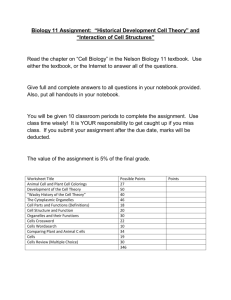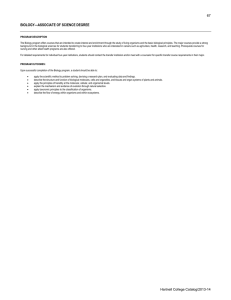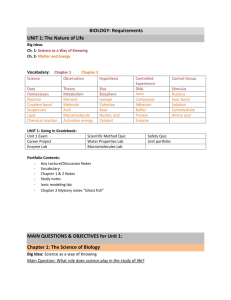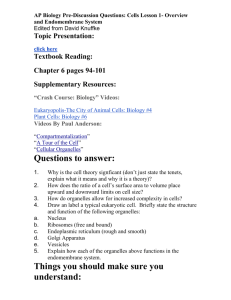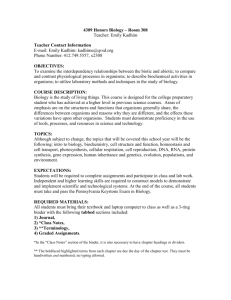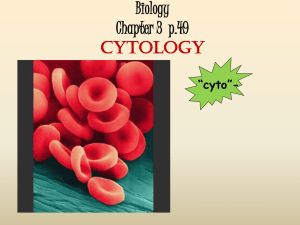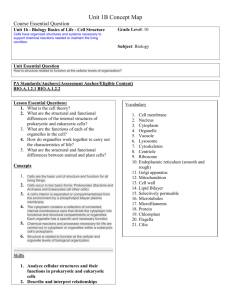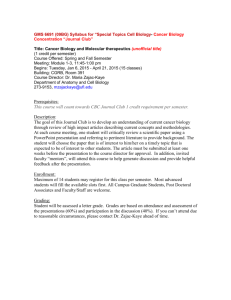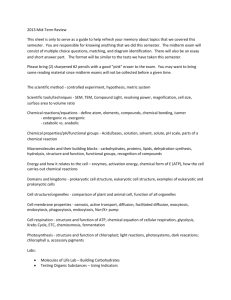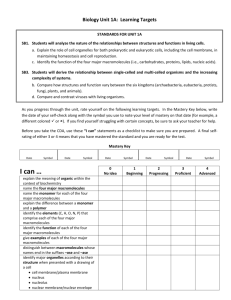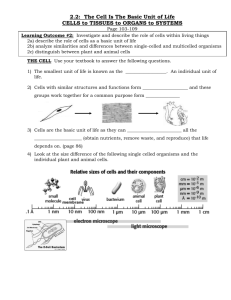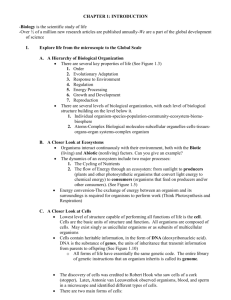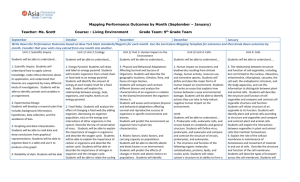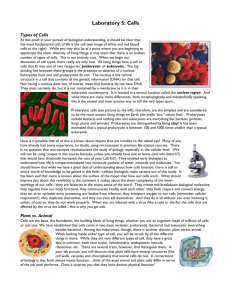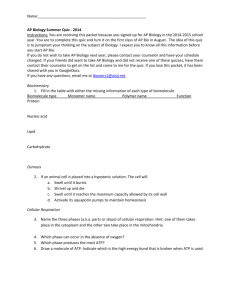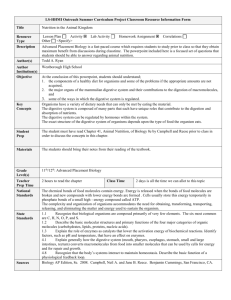Fall 2015 Semester Exam Study Guide
advertisement
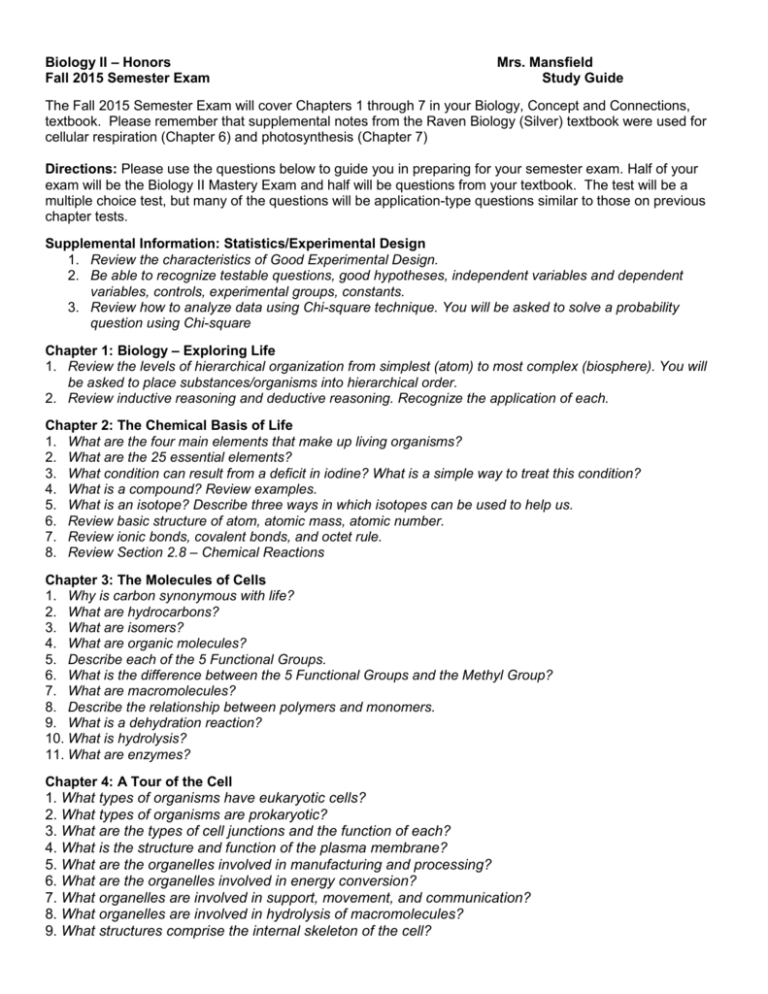
Biology II – Honors Fall 2015 Semester Exam Mrs. Mansfield Study Guide The Fall 2015 Semester Exam will cover Chapters 1 through 7 in your Biology, Concept and Connections, textbook. Please remember that supplemental notes from the Raven Biology (Silver) textbook were used for cellular respiration (Chapter 6) and photosynthesis (Chapter 7) Directions: Please use the questions below to guide you in preparing for your semester exam. Half of your exam will be the Biology II Mastery Exam and half will be questions from your textbook. The test will be a multiple choice test, but many of the questions will be application-type questions similar to those on previous chapter tests. Supplemental Information: Statistics/Experimental Design 1. Review the characteristics of Good Experimental Design. 2. Be able to recognize testable questions, good hypotheses, independent variables and dependent variables, controls, experimental groups, constants. 3. Review how to analyze data using Chi-square technique. You will be asked to solve a probability question using Chi-square Chapter 1: Biology – Exploring Life 1. Review the levels of hierarchical organization from simplest (atom) to most complex (biosphere). You will be asked to place substances/organisms into hierarchical order. 2. Review inductive reasoning and deductive reasoning. Recognize the application of each. Chapter 2: The Chemical Basis of Life 1. What are the four main elements that make up living organisms? 2. What are the 25 essential elements? 3. What condition can result from a deficit in iodine? What is a simple way to treat this condition? 4. What is a compound? Review examples. 5. What is an isotope? Describe three ways in which isotopes can be used to help us. 6. Review basic structure of atom, atomic mass, atomic number. 7. Review ionic bonds, covalent bonds, and octet rule. 8. Review Section 2.8 – Chemical Reactions Chapter 3: The Molecules of Cells 1. Why is carbon synonymous with life? 2. What are hydrocarbons? 3. What are isomers? 4. What are organic molecules? 5. Describe each of the 5 Functional Groups. 6. What is the difference between the 5 Functional Groups and the Methyl Group? 7. What are macromolecules? 8. Describe the relationship between polymers and monomers. 9. What is a dehydration reaction? 10. What is hydrolysis? 11. What are enzymes? Chapter 4: A Tour of the Cell 1. What types of organisms have eukaryotic cells? 2. What types of organisms are prokaryotic? 3. What are the types of cell junctions and the function of each? 4. What is the structure and function of the plasma membrane? 5. What are the organelles involved in manufacturing and processing? 6. What are the organelles involved in energy conversion? 7. What organelles are involved in support, movement, and communication? 8. What organelles are involved in hydrolysis of macromolecules? 9. What structures comprise the internal skeleton of the cell? 10. Be able to identify the secretory pathway of a protein produced in the ER. 11. Explain the evolution of cells from prokaryotic to eukaryotic using the hypothesis of endosymbiosis. 13. Describe the three types of cytoskeleton and their function. Chapter 5 Guiding Questions: 1. Review the following types of cellular transport. Be able to identify their mechanisms (high to low or low to high concentration gradient, ATP – energy, etc. ) a. Diffusion b. Active Transport c. Osmosis d. Facilitated diffusion e. Endocytosis f. Exocytosis 2. Explain how Carrier Proteins work and in which process(es) they are involved. 3. Describe the work of a Channel Protein. Include the types of processes in which they are involved. 4. What are ion channels? 5. Describe hypotonic, hypertonic, and isotonic solutions and explain their effects on a cell. 6. Maintain osmotic pressure and how osmotic balance is maintained. 7. Explain how a sodium-potassium pump works.
